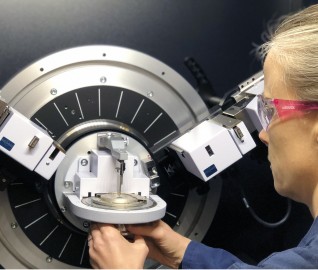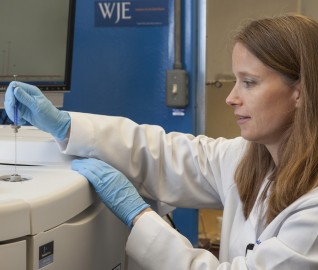The metallurgical properties of aluminum and its alloys are highly dependent on chemical composition. Precise and accurate analyses are essential to obtaining desired properties, meeting customer specifications, and helping to reduce scrap due to off-grade material. This test method is applicable to chill cast specimens as defined in Practice E716 and can also be applied to other types of samples provided that suitable reference materials are available. Also, other sample forms can be melted and cast into a disk, using an appropriate mold, as described in Practice E716. However, it should be noted that some elements (for example, magnesium) readily form oxides, while some others (for example, sodium, lithium, calcium, and strontium) are volatile and may be lost to varying degrees during the melting process.
WJE laboratories are accredited by ANAB (ISO/IEC 17025) to perform testing standard ASTM E1251 for Analysis of Aluminum and Aluminum Alloys by Spark Atomic Emission Spectrometry.
Contact us to learn more.
Keywords
ASTM E1251 - Aluminum - Aluminum Alloys - Atomic Emission Spectrometry - Atomic Emission Spectroscopy - Chemical Composition - Metallurgical Properties
ICS CODE
77.120.10 (Aluminium and aluminium alloys)
UNSPSC CODE
11101705 (Aluminum); 11172000 (Aluminum based alloys)
CITATION FORMAT
ASTM E1251-17a, Standard Test Method for Analysis of Aluminum and Aluminum Alloys by Spark Atomic Emission Spectrometry, ASTM International, West Conshohocken, PA, 2017,
www.astm.org
 John E. Pearson, Principal and Laboratory ManagerWJE Northbrook MORE >People | John E. Pearson, Principal and Laboratory Manager
John E. Pearson, Principal and Laboratory ManagerWJE Northbrook MORE >People | John E. Pearson, Principal and Laboratory Manager WJE's Janney Technical Center (JTC) provides advanced testing and forensic capabilities to... MORE >Labs | Janney Technical Center
WJE's Janney Technical Center (JTC) provides advanced testing and forensic capabilities to... MORE >Labs | Janney Technical Center Our materials scientists provide comprehensive consulting services for the evaluation and... MORE >Services | Materials Evaluation and Testing
Our materials scientists provide comprehensive consulting services for the evaluation and... MORE >Services | Materials Evaluation and Testing WJE was founded on a spirit of innovation—that everything can be improved and that... MORE >Services | Product Development, Evaluation, and Testing
WJE was founded on a spirit of innovation—that everything can be improved and that... MORE >Services | Product Development, Evaluation, and Testing


































